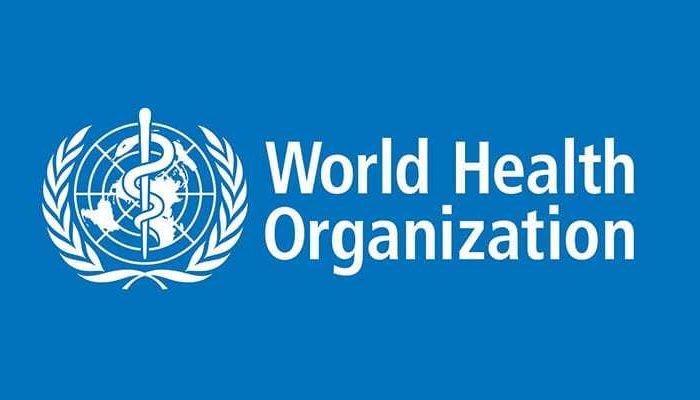Lockdowns are killing more people than the coronavirus, death records from doctors around the world show

For months, doctors and other medical experts have been warning about the negative impacts of lockdown measures put in place by governments around the world. During those times, there was no concrete data to support their warnings.
Now for the first time, doctors worldwide are recording more deaths due to lockdowns than to COVID-19. Their findings confirmed a long-suspected fear of the Covid-19 lockdowns. A new study from doctors in Colorado looked at the number of cardiac arrest deaths occurring at home in the time of coronavirus and compared it to the stay-at-home period to prior months. The team of doctors found there is a direct correlation to the quarantine orders.
The study, which is published at NIH, offers the first clue to the answer in Colorado. Looking at data on ambulance calls in Denver, they found that, while overall calls for service went down during the stay-at-home period, the number of people dying from cardiac arrests at home shot up, according to a report from Colorado Sun.
The study was led by Dr. Brian Stauffer, the head of cardiology at Denver Health. Per Colorado Sun, Stauffer’s team found that cardiac arrests at home in Denver more than doubled in the two weeks after the statewide stay-at-home order was issued compared with historical averages. Even compared with more recent data, the weekly average of out-of-hospital cardiac arrests jumped to 46 during those two weeks, versus 26 or 27 in the three months prior.
Their findings were not unique to Colorado. The report also found that hospitals across the country and in Europe documented the same phenomenon. Had stay-at-home orders somehow also slowed heart attacks or were people in need of medical help simply not seeking it for fear of COVID-19?
In Milan, Italy, Dr. Bernhard Reimers of Humanitas Research Hospital, Milan, said the STEMI cases (heart attacks) are down by an estimated 70%. “If symptoms are not too bad, they don’t call the ambulance because they are afraid to go into hospital,” Dr. Reimers said.
In Spain, the drop has been 40 percent, with estimates in Madrid being as high as an 80 percent drop in cases. At one hospital in Madrid, they are averaging three-to-four heart cases a week. Dr. Héctor Bueno, MD (Hospital Universitario 12 de Octubre, Madrid), the interventional cardiology working group of the Spanish Society of Cardiology published a paper that shows a drop of 40%. “But I can tell you that’s much lower than we’re seeing in Madrid,” he told TCTMD. That city has been hit much harder by COVID-19 than the rest of Spain.
Below is how the medical journal The Heart Beat describes it:
The stories are eerily similar around the globe. At George Washington University Hospital in Washington, DC, Jonathan Reiner, MD, estimated they’ve had just two or three STEMI cases in the last 3 weeks; they usually see three a week, with a yearly volume of 120-150 cases. This has been coupled with a “dramatic decrease” in ACS admissions, he added.
Also here in the US, a cardiologist in Boston detailed that he went a week without seeing a single heart case come in, something he has never experienced prior in 13 years of attending.
In another study reported in the medical journal Lancet, researchers found that “several countries affected by the COVID-19 pandemic have reported a substantial drop in the number of patients attending the emergency department with acute coronary syndromes and a reduced number of cardiac procedures. We aimed to understand the scale, nature, and duration of changes to admissions for different types of an acute coronary syndrome in England and to evaluate whether in-hospital management of patients has been affected as a result of the COVID-19 pandemic.”
As part of their study, they analyzed data on hospital admissions in England for types of acute coronary syndrome from Jan 1, 2019, to May 24, 2020, that was recorded in the Secondary Uses Service Admitted Patient Care database. Admissions were classified as ST-elevation myocardial infarction (STEMI), non-STEMI (NSTEMI), myocardial infarction of unknown type, or other acute coronary syndromes (including unstable angina).
Below are their findings:
Hospital admissions for acute coronary syndrome declined from mid-February, 2020, falling from a 2019 baseline rate of 3017 admissions per week to 1813 per week by the end of March, 2020, a reduction of 40% (95% CI 37–43). This decline was partly reversed during April and May, 2020, such that by the last week of May, 2020, there were 2522 admissions, representing a 16% (95% CI 13–20) reduction from baseline. During the period of declining admissions, there were reductions in the numbers of admissions for all types of acute coronary syndrome, including both STEMI and NSTEMI, but relative and absolute reductions were larger for NSTEMI, with 1267 admissions per week in 2019 and 733 per week by the end of March, 2020, a percent reduction of 42% (95% CI 38–46).
Researchers then compared their results with the weekly average in 2019. They later found there was a substantial reduction in the weekly numbers of patients with acute coronary syndrome who were admitted to hospital in England by the end of March 2020, which had been partially reversed by the end of May 2020.
The reduced number of admissions during this period, they said, is likely to have resulted in increases in out-of-hospital deaths and long-term complications of myocardial infarction and missed opportunities to offer secondary prevention treatment for patients with coronary heart disease.
The report of Colorado study concludes with the following:
Dr. Stauffer and his colleagues found that the number of people in Denver who died of cardiac arrests at home in the two weeks following the statewide stay-at-home order was greater than the total number of people who died of COVID-19 in the city during that time. “It was pretty profound the difference that we saw in 2020 in the setting of COVID compared to the prior years,” Dr. Stauffer said.




